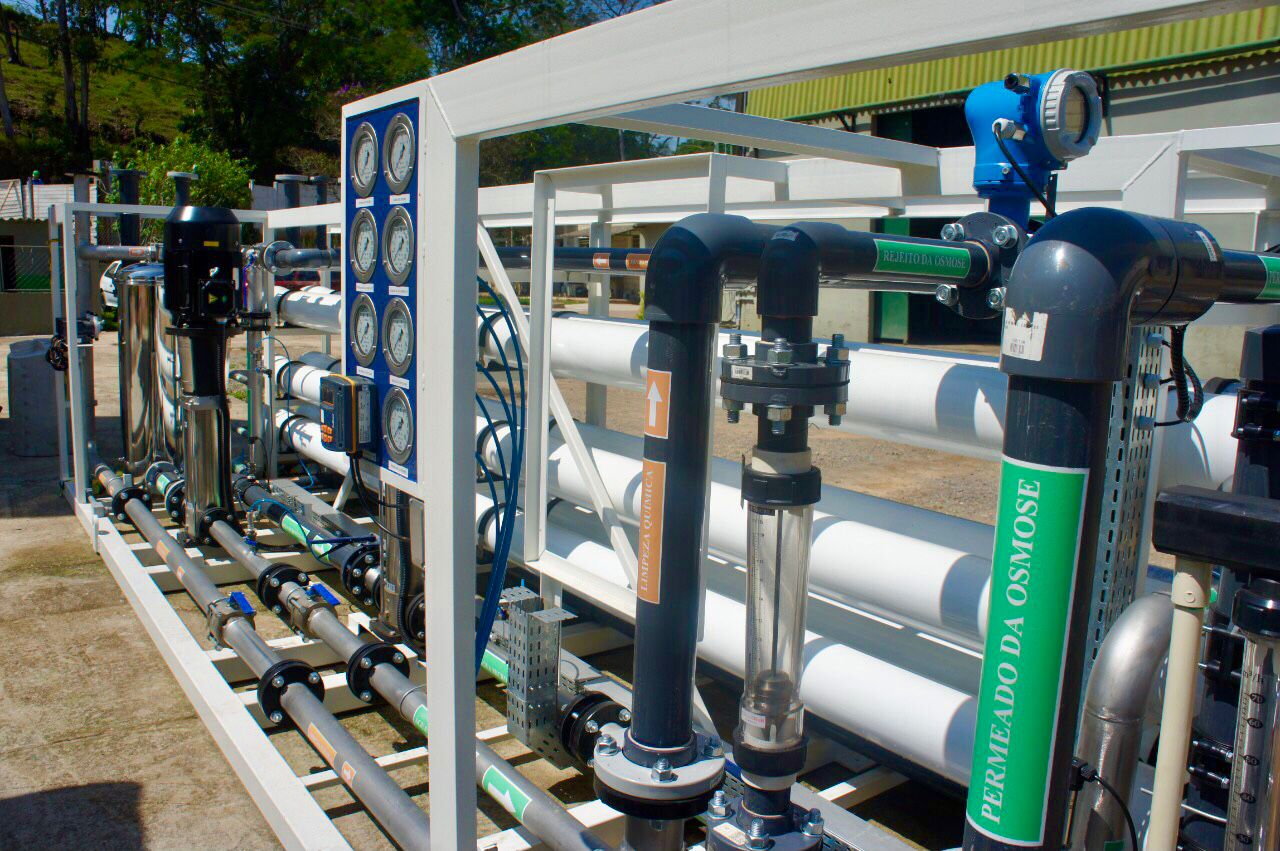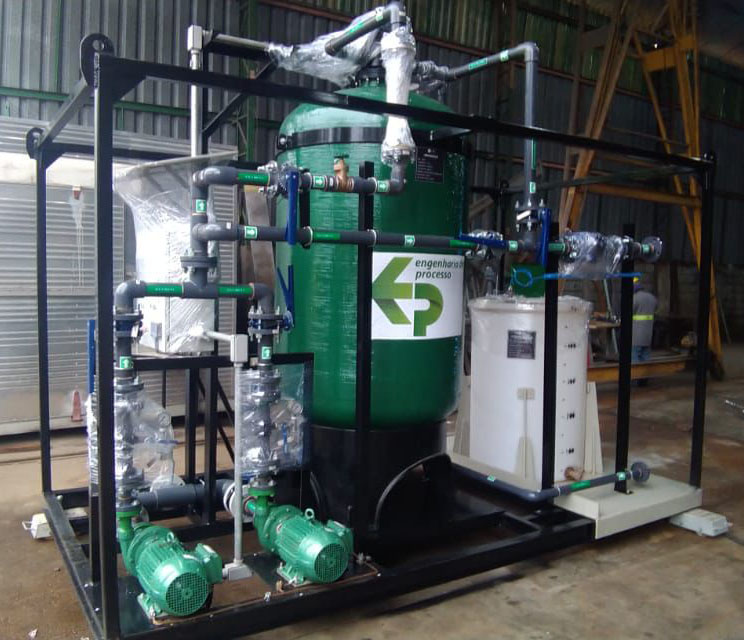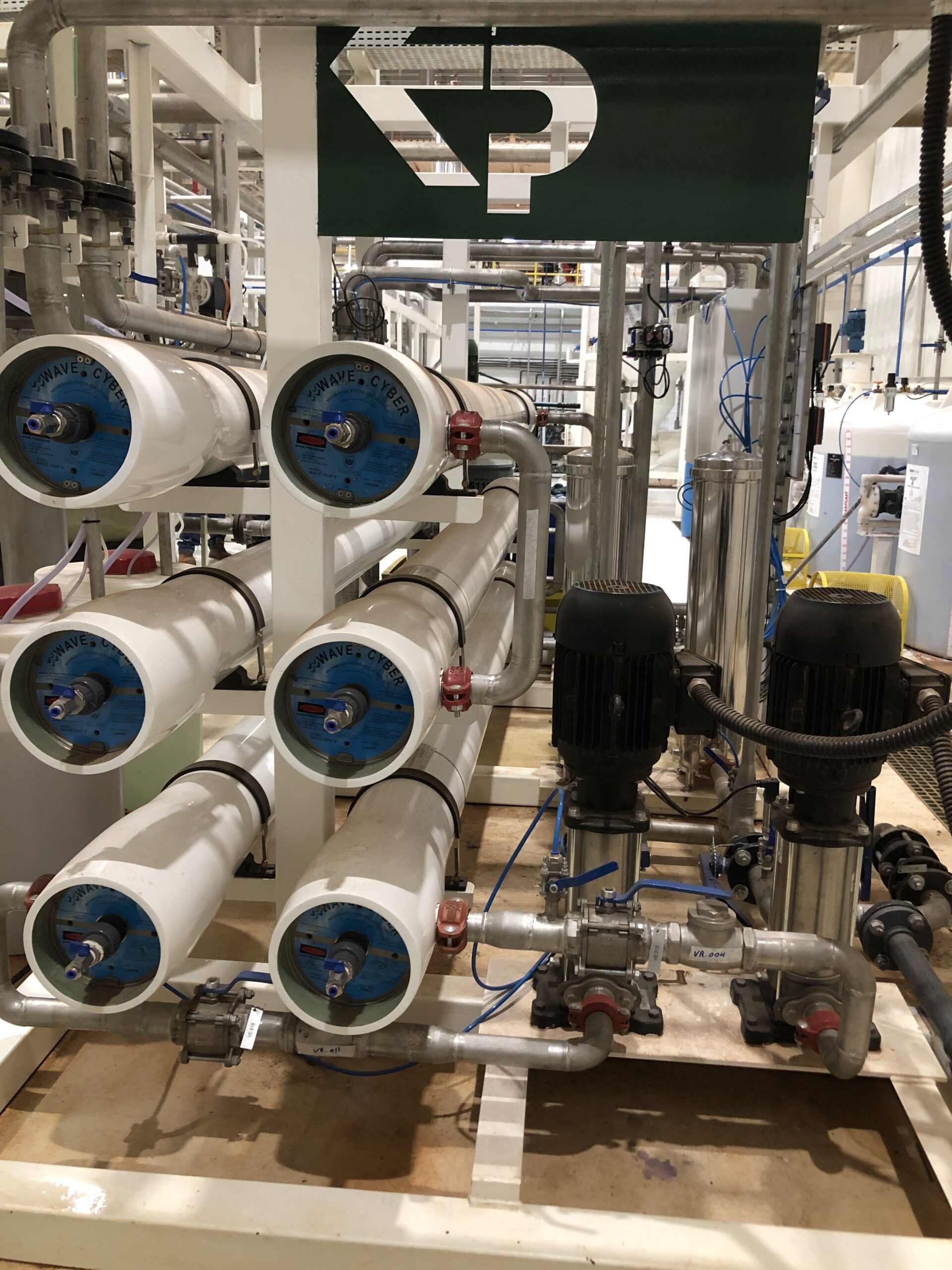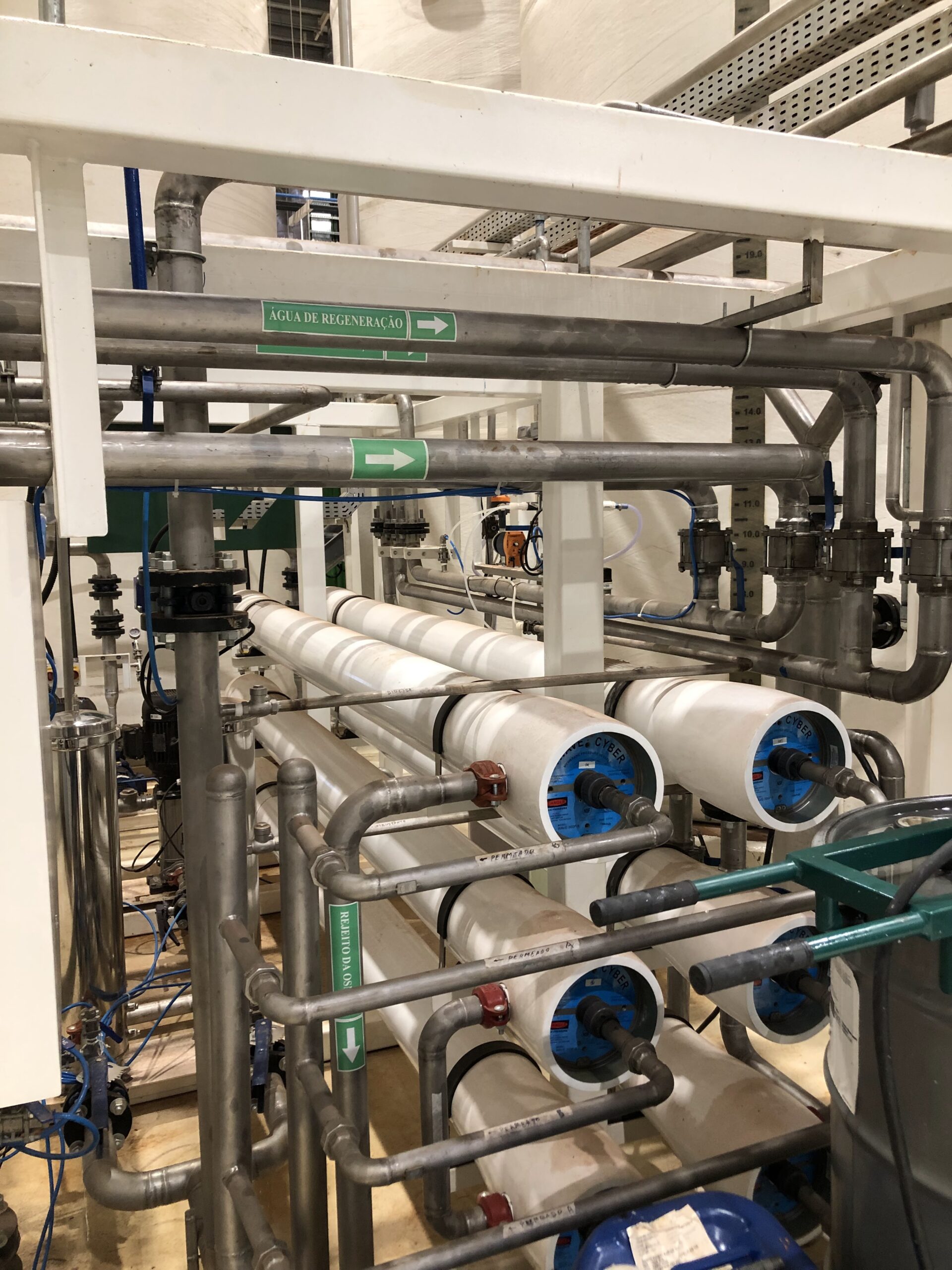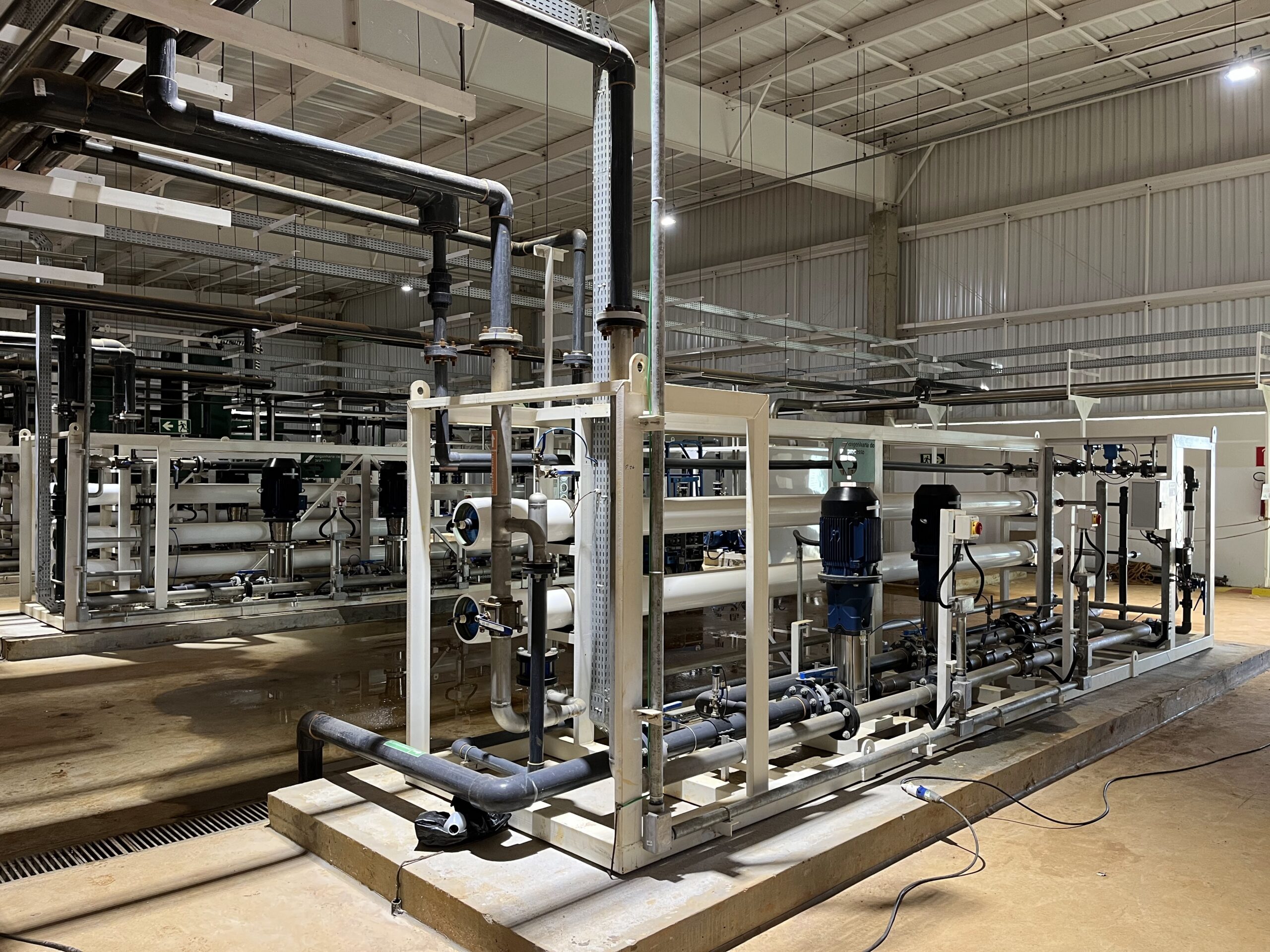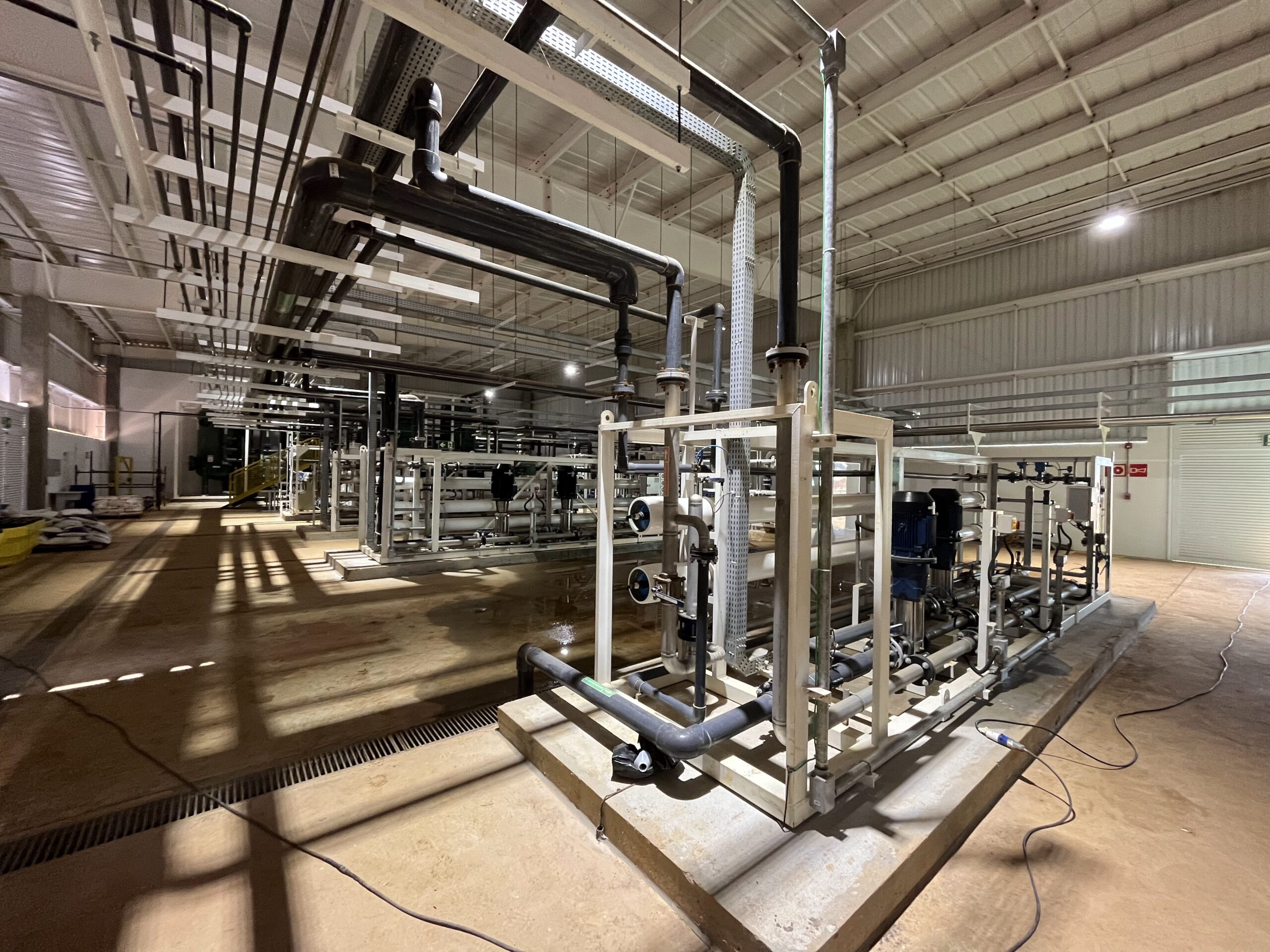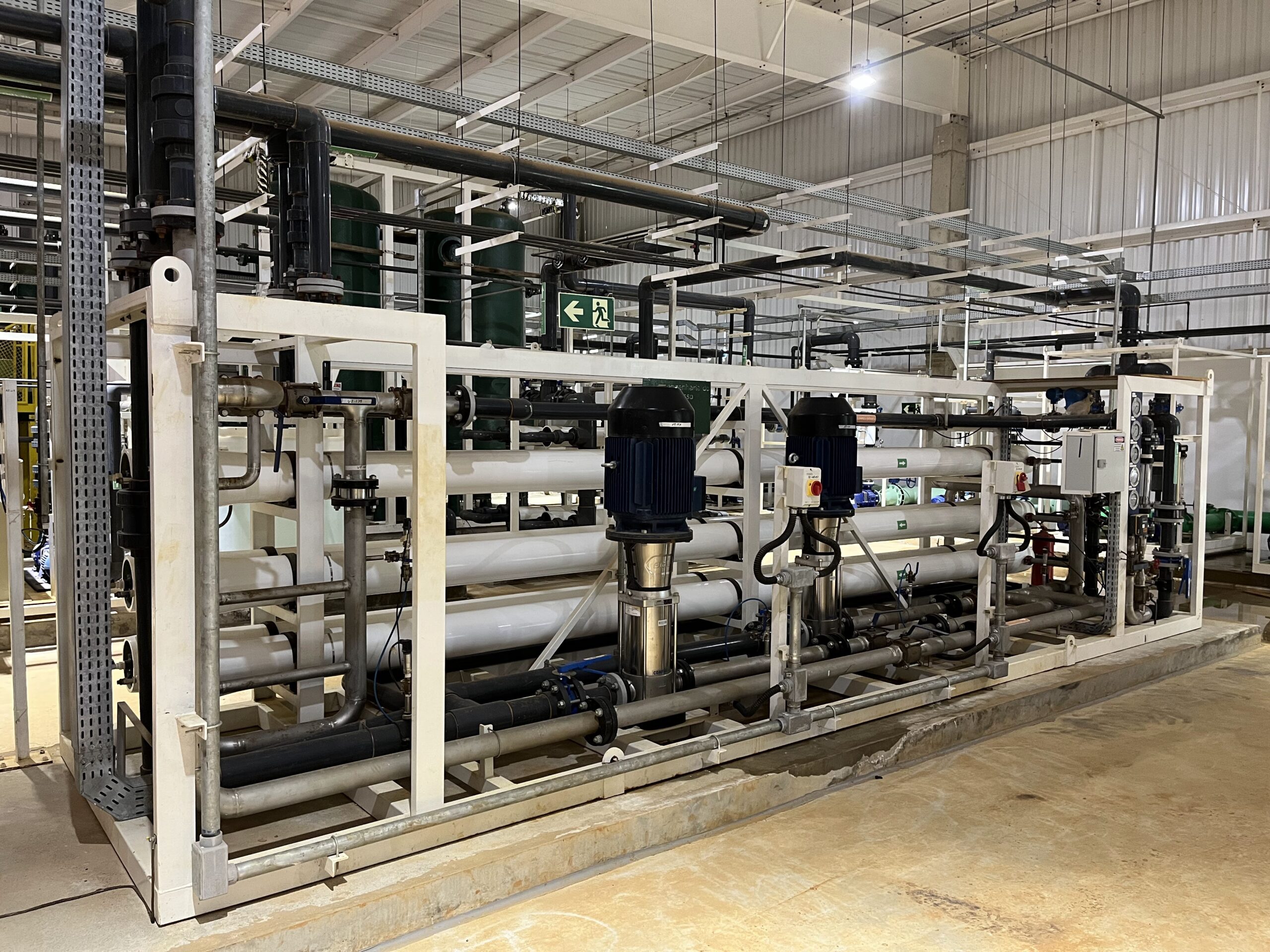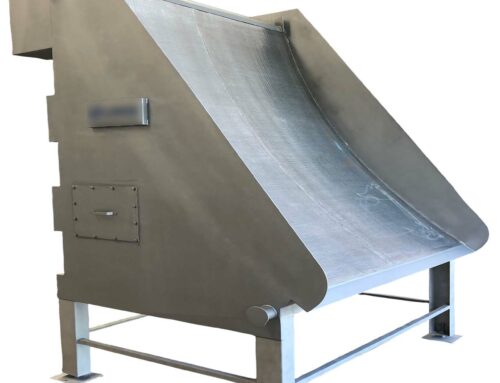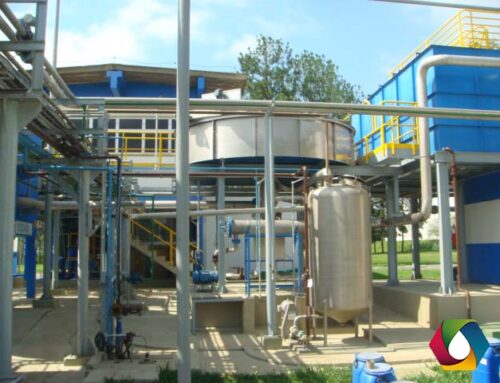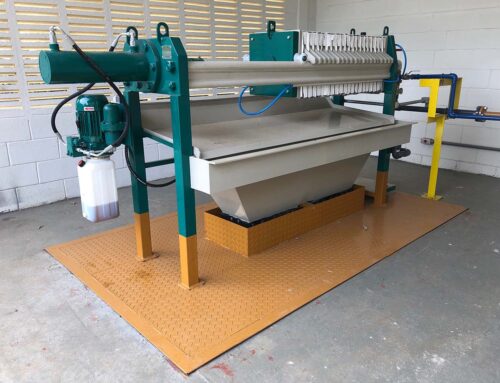Demineralization is the process of extracting minerals, ions, and heavy metals contained in water, usually performed through reverse osmosis or ion exchange equipment.
Deionized water is generally used in applications where water purity is required, such as laboratories, pharmaceutical industries in the production of ultra pure water (WFI), food (water for use in production), clinics and hospitals that perform hemodialysis, turbines for power generation, high-pressure boilers, cooling towers, industrial washing water that carries out the painting process on surfaces such as cans, cars and reuse systems.
Demineralization methods:
There are two main types of water demineralization: chemical demineralization and physical demineralization.
The chemistry is carried out through chemical processes such as ion exchange (Softening and Mixed Bed) and electrolysis. The ion exchange process uses resins to exchange the ions present in the water for hydrogen or hydroxide ions, while electrolysis uses an electric current to separate the salts dissolved in the water.
Physics is accomplished through physical processes such as reverse osmosis and distillation. Reverse osmosis uses a semipermeable membrane to separate solid salts from water, while distillation uses the principle of difference in boiling points to separate water from its solid salts.
Demineralization offers several benefits, including:
- Water quality: Demineralization removes dissolved salts and other undesirable minerals from water, improving water quality and making it more suitable for specific uses, such as chemical, pharmaceutical and food industries.
- Equipment conservation: Demineralized water can prolong the useful life of equipment and systems that use water, such as cooling towers, boilers and steam generators.
- Cost savings: Demineralization can reduce operating and maintenance costs, such as reducing the need for frequent cleaning of equipment and systems.
- Improved energy efficiency: Demineralization can improve energy efficiency, such as reverse osmosis, which uses less energy than other methods to demineralize water.


